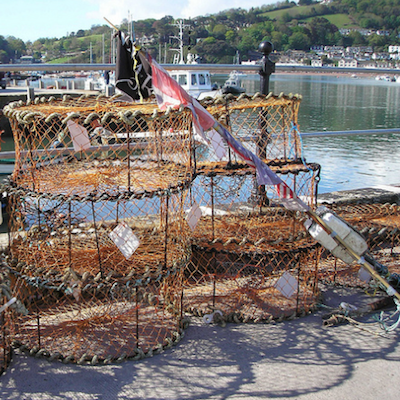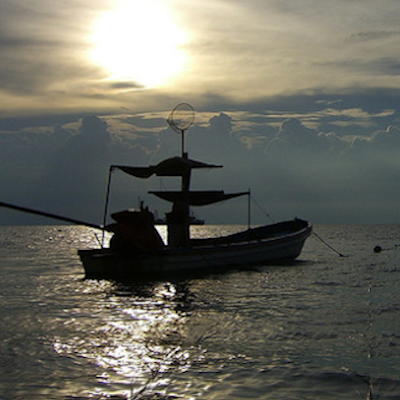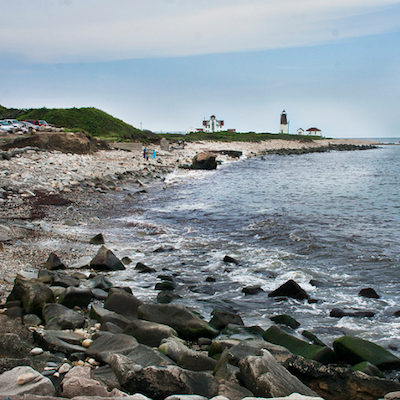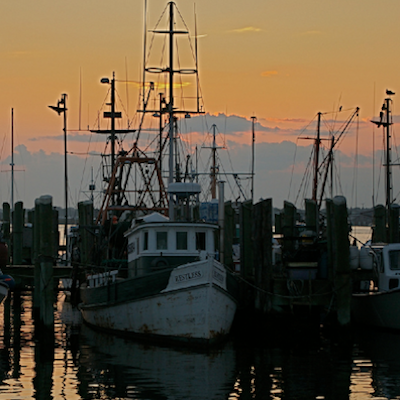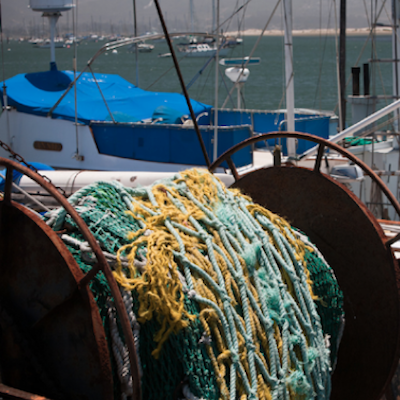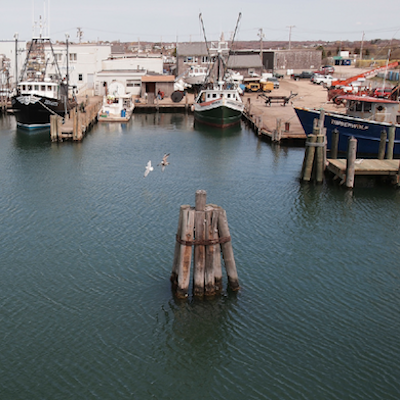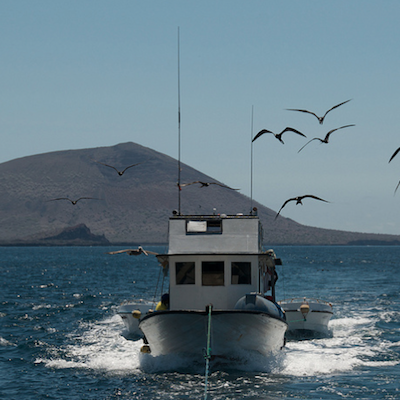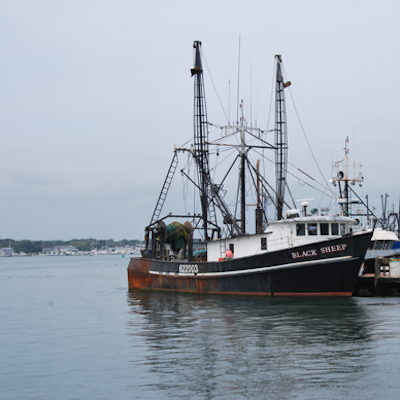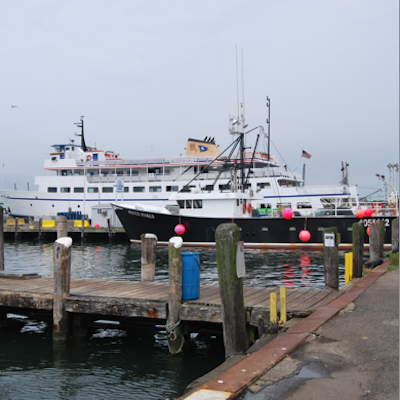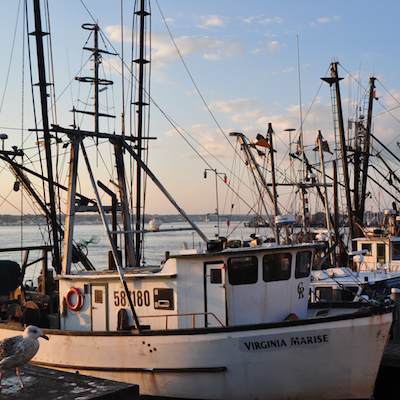Richard August: Block Island Deer Slaughter Canceled
Saturday, February 22, 2014
After a meeting with the Attorney General’s office the Department of Environmental Management has backed off what they describe as a “non-recreational” deer culling operation on Block Island scheduled for this month. The matter was discussed at the New Shoreham Town Council meeting Friday night.
Upon the recommendation of Brian Tefft, RI DEM chief game biologist, New Shoreham’s town council voted to engage a Connecticut-based commercial hunting company to cull the deer herd on Block Island. White Buffalo, Inc., a non-profit company, was to be paid about $90,000 to shoot 200 animals using .223 caliber rifles. This is the same bullet used in so-called assault rifles.
A company from Maine would have been paid $29,000 to process the carcasses in a mobile butcher shop. Other expenses brought the projected cost of the slaughter to $128,000 this year.
GET THE LATEST BREAKING NEWS HERE -- SIGN UP FOR GOLOCAL FREE DAILY EBLASTIsland overrun
According to Tefft the island is overrun by 800-1,000 Virginia white tailed deer and recreational hunters are not getting the job done in controlling the herd. This many deer, he testified, represent a public health threat in the form of tick-borne Lyme disease and are a threat to the ecology. The Nature Conservancy supported his claim citing damage to endangered plant life.
Tefft met White Buffalo’s president Anthony DeNicola at a convention. He said the company has been successful in culling the deer herd in several towns in Connecticut and New York. Their website boasts that they have killed 9,000 deer.
A game warden in one Connecticut community reported that White Buffalo is under investigation by conservation police for shooting deer without permission on private property that lay outside the zone in which they were supposed to operate. This, he believed, was because their shooters could not kill enough deer in the designated area that was supposedly overpopulated with the animals.
According to The New York Times, East Hampton, Long Island recently stopped a planned hunt by White Buffalo in that town.
RIDEM spokeswoman Gail Mastrati told The Providence Journal that, “The bait and shoot deer reduction project on Block Island, authorized under emergency regulations filed by DEM on Nov. 7, 2013, is not a recreational hunting activity.” The statement went on, “the discipline and skills in marksmanship are more sophisticated and strategic than those necessary to be a successful recreational deer hunter.”
Marksmen
According to the Connecticut game warden, here’s how White Buffalo’s “marksmen” operate. First, during the dead of winter when food sources are scarce deer obviously get hungry. They tend to gather in “pods” in “deeryards” that are out of the wind and offer some shelter under trees. White Buffalo’s “sharpshooters” put out bait piles of corn and then stand in the back of a pickup truck parked about 25 yards away. They do this in the 3 hours before dawn and 3 hours after sunset which is illegal for hunters to do in RI.
Next, when a pod of deer approaches the bait pile the so-called marksman using a rifle equipped with a silencer and night vision telescopic sight shoots an animal with a subsonic, 53-grain frangible bullet. Brian Tefft testified that this is a lead bullet that makes little noise. Frangible means the bullet disintegrates upon striking the target. The deer must be hit in the head or else it will painfully stagger away with a wound because the bullet cannot reach a vital organ.
Because the sound of the shot is a barely audible “pop”, the remaining hungry deer will return to the bait pile and the marksman using his “discipline and skills” shoots another, and another and another until the pod is eliminated.
Emergency regulations
The emergency regulations to which the DEM statement refers cite RI General Laws Sec.42-35-3 (b) and 42-35-4(c)(2) that deal with the adoption or repeal of an agency rule or regulation. In other words, RIDEM can change the regulations it has written if it follows the procedure provided in the general laws. However, what the emergency regulation attempted to do was suspend several laws.
RI General Laws Sec. 20-15-1 states “the following prohibitions and restrictions shall always [italics mine] apply to deer hunting:
(2) Hunting shall only be permitted from one half (1/2) hour before sunrise to one half (1/2) hour after sunset;
(5) Only a shotgun, muzzle loading rifle, long bow or crossbow shall be utilized in deer hunting;
(6) No person shall use any…salt lick or other device for the purpose of ensnaring, enticing, taking, injuring, or killing a deer.”
Subparagraph (5) means a centerfire rifle of any caliber cannot be used for deer hunting.
RIDEM is authorized to write regulations around this statute such as what gauge shotgun may be used or whether buckshot is allowed. However, a state agency cannot change a law. Laws are adopted, repealed or amended by the General Assembly passing a bill which is then signed by the governor. This happened a couple of years ago when the law was amended to allow anyone to hunt deer with a crossbow which was previously prohibited under DEM hunting regulations.
DEM’s executive counsel Mary Kay stated that Sec. 20-1-2 grants statutory authority to the director to manage resident wildlife. She went on, “Hunting regulations do not apply to the deer culling operation because it is not a hunting activity.” However, in 1985 in a suit brought by Defenders of Animals, Judge Thomas Needham stopped DEM from shooting deer at night on Block Island’s airport runway.
In addition to violating state deer hunting laws, White Buffalo would have violated the criminal statutes set out in Title 11 of the General Laws.
Section 11-47-20 makes the possession of “any muffler, silencer, or device for deadening the sound of a firearm when discharged” a felony. There is a photograph on the internet of a White Buffalo shooter using a rifle equipped with a silencer.
Section 11-47-51 prohibits the possession of a loaded rifle by a civilian “in or on any vehicle or conveyance with its attachment while upon or along any highway, road, lane, or trail within the state”. The photograph shows the shooter firing his rifle from the bed of a pickup truck.
When DEM executive counsel Mary Kay was questioned about the authority which allows DEM’s director to suspend criminal statues she replied, “it would be inappropriate for me to comment on specific legal issues”.
DEM’s executive counsel could not be reached for comment.
Two men who have hunted deer on Block Island for years weighed in on the subject. One of them, a life long, year-round resident disputed the assertion that there are 800 to 1,000 deer on the island. He and the Connecticut game warden also dispute the methodology employed by state game biologists to estimate the number of deer per square mile.
Counting deer
One way deer are counted is by flying over an area at low level. One or two observers count the deer they see. This number is multiplied by a factor between 0.5 and 2 depending on the weather conditions at the time of the flyover. RIDEM always multiplies by 2 which implies that the weather is always poor when they do the count. Some biologists claim that this is justified because for every deer they see there is another they don’t. Sounds very scientific doesn’t it?
The Connecticut warden said that during the winter when deer “pod-up” in deeryards an aerial observer may see 15 animals. Factoring up by 2 he or she then reports that the herd density is 30 deer per square mile. However, after collisions with vehicles during the fall rut, kills by recreational hunters, starvation and sickness, those 15 deer may very well be the only survivors for many miles around.
Data provided by an environmental scientist at Yale University shows that RIDEM estimated the Block Island deer herd based on an extrapolated, “eyeball”, partial aerial survey at 780 animals in 2011. This means they saw only 390 deer. During the 2011-12 hunting season 197 deer were taken. DEM says the herd more than doubled to 1,420 animals in the spring of 2013. Clearly, this is biologically impossible and more than likely the number was adjusted to support the bait and shoot program being touted by DEM and The Nature Conservancy.
DEM’s website contains a lengthy essay on whitetail deer. Included are the following statements: “Hunting is a vital tool for managing deer. It has proven to be the most cost-effective, efficient, and successful method of controlling deer populations. Hunting is highly regulated, has a high safety rating, and can be tailored to meet the needs of individual communities.” I believe this refers to recreational hunting.
DEM spokesperson Ms. Mastrati is correct; what White Buffalo does is not “recreational hunting”. If it had been allowed to proceed on Block Island there can be little doubt that DEM would promote this type of activity on the mainland anywhere deer are perceived to be a problem.
Richard August is a cast member of the radio show “Lock, Stock and Daria” which deals with firearms-related topics and is heard on Saturdays on WHJJ in Providence. He has hunted deer for over 30 years in several states and Canada.
Related Slideshow: RI Fishing Industry’s Decline by the Numbers
The Rhode Island commercial fishing industry is in trouble. A study conducted in 2011 by Cornell University offered a portrait of an industry in crisis, with declines in sales, fishing vessels, and many types of permits. That study also showed how important the preservation of the fishing industry is to the state economy. Below are key figures on the decline and current state of the fishing industry in Rhode Island excerpted from the study. Some data is also taken from the National Oceanic and Atmospheric Administration.
Related Articles
- URI Expert: Deer Ticks Up 52% This Summer
- Second Place Top School: Block Island High School
- Newport + Block Island Named Best Yachting Towns
- NEW: Cape Air Announces Service to Block Island
- Block Island’s Town Beach Best in US—Coastal Living Magazine
- NEW: Block Islander Brian Williams Rapping Goes Viral
- Block Island’s Historic Surf Hotel to Reopen After 4 Years
- 5 Weekend Musts: Taste of Block Island & More



